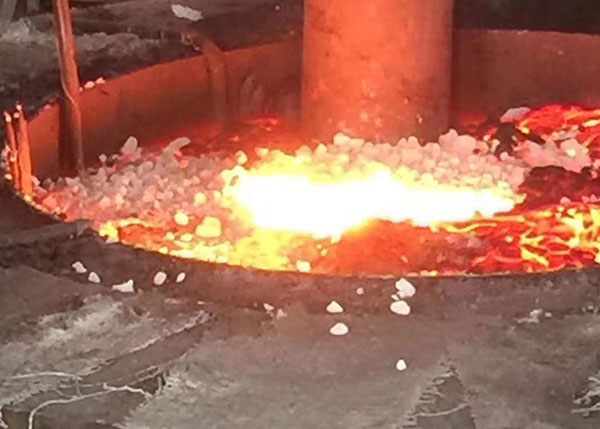Welcome to the official website of Yingkou South Building Dongtai Refractory Company!
Welcome to the official website of Yingkou South Building Dongtai Refractory Company!
Contact:Manager Liu
phone:+86 13840777765
address:China Liaoning Yingkou City Nanlou Dongtai Refractory Co., Ltd.
Website : en.ykdtnh.com
URL:www.ykdtnh.com
Different kinds of special refractory materials, although their chemical composition and structure are different, their performances also have certain differences. The intermediate frequency furnace ramming material has many excellent properties from ordinary refractory materials in general than ordinary refractory materials.
First, the thermal properties
Thermal expansion: Thermal expansion refers to the reversible increase and decrease of the linearity and volume temperature of a material. Often expressed as the number of linear expansion or volume expansion coefficient. Most of the special refractory materials have relatively large linear expansion coefficients, and only the fused silica, boron oxide, and silicon oxide have relatively small linear expansion coefficients.
Second, the mechanical properties
Special refractories have large elastic modulus. Most have high mechanical strength, but have a low impact strength due to brittleness compared to metallic materials. Most of the special refractory materials have high hardness, so wear resistance, air flow resistance or dust rinsing is better. Most special refractory materials have relatively low temperature creep, molybdenum disilicide. The magnitude of the creep value is related to the crystal size, grain boundary material, porosity, and the like.

Third, the nature of electricity
Most of the high-melting-point oxides are of the rim, in which yttrium oxide (ThO2) and stabilized zirconia (ZrO2) have electrical conductivity at high temperatures, as shown in Table 3; carbides and borides have small electrical resistance; some nitrides It is a good conductor of electricity, while others are typical suffixes. For example, TiN has a conductivity of metal (ρ is 30 × 10 -6 Ω·cm), and BN is a rim (ρ is 1018 Ω·cm). All silicides are good conductors of electricity.
Fourth, the nature of use
1) Fire resistance: The melting point of special refractories is almost above 2000 °C, and high tantalum carbide (HfC) and tantalum carbide (TaC) are 3887 ° C and 3877 ° C. The degree of refractoriness is also high, and in an oxidizing atmosphere, the use temperature of the oxide is even close to the melting point. Nitrides, borides, and carbides have a higher use temperature than oxides in a neutral or reducing atmosphere. For example, TaC can be used up to 3000 ° C in an N 2 atmosphere, and BN can be used up to 2800 ° C in an Ar atmosphere. The high temperature resistance performance is: carbide > boride > nitride > oxide. Their high temperature oxidation resistance is: oxide > boride > nitride > carbide.
2) Thermal shock resistance: In special refractory materials, due to the low thermal conductivity of cerium oxide, the thermal conductivity of most borides is not high, and the linear expansion coefficient of fused silica is particularly small, so the thermal shock resistance is very good. . Some fiber products and fiber reinforced composite products have high porosity and tensile strength, and these materials have better thermal shock resistance. Silicon carbide, silicon nitride, boron nitride, molybdenum disilicide, etc. also have good thermal shock resistance.